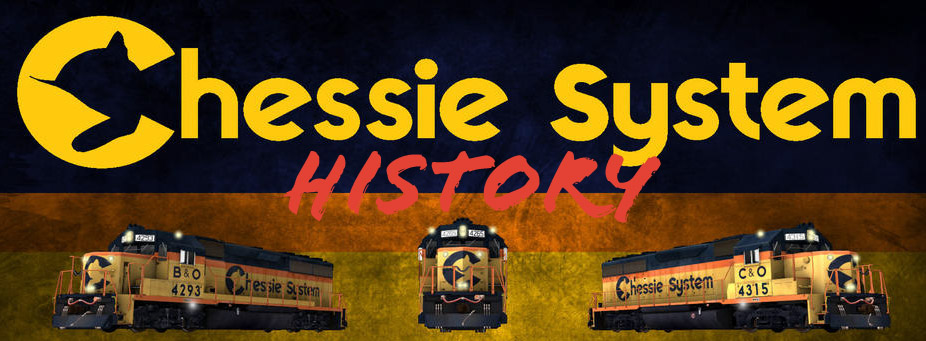The Chessie System History – Introduction
The fall of the Baltimore and Ohio (B&O) started in October 1957 during a moderate recession, but for the railroad this fall was rather long and rather hard. The B&O was involved in several improvement projects that consumed cash, and these projects would not produce any income until the projects were finished. Many projects were put on hold. One such project was the widening of tunnels in West Virginia that would allow for the use of piggyback equipment. Its fleet was getting old. Many of the B&O’s early diesel locomotives and half of the freight car fleet was approaching their end of service life. The B&O’s passenger service was slashed. The Chesapeake and Ohio (C&O) and many others feared that the B&O might sink under the waves of bankruptcy, but also thought that it was savable and could be brought back.
Before 1958, before Robert Young took his own life, the C&O under him was a kingmaker in Eastern mergers and acquiring the Pere Marquette was his major success. In 1958, the talk about uniting the C&O and B&O began in the context of a C&O official stating that the C&O was “open to talk about merger.” Talk about merger and the C&O was the main topic of a meeting between four former Young associates in January 1960. The C&O also wanted diversification and saw a relationship with the B&O as control and rehabilitation, not a full merger (Turner, Dixon and Huddleston, 1986).
Fred Toothman pinpoints May 18, 1960 “as the start of the B&O-C&O story, when Howard E. Simpson, President of the B&O, and Walter J. Tuohy, President of the C&O, jointly announced the C&O had made an offer to exchange shares of C&O common stock for shares of B&O common stock ‘as the first step to merger the two properties’ “ (1993: 136).
The C&O’s control and rehabilitation of the B&O was not about a “merger” or “take over.” There were three main goals that the C&O had in mind. The first was the strengthening of the B&O through pooling of equipment and widening and raising of tunnels.The second was the increase of diversification opportunities for the C&O through the affiliation with the B&O. The third was that both roads will work together with out the loss of identity of a full merger.
The Interstate Commerce Commission (ICC) would grant the C&O control of the B&O on December 17, 1962, and full control would take effect on February 4, 1963. A “full merger” would require yet another application to the ICC and diversification for the C&O would mean venturing into non-railroad industries. That would require a different type of business structure, such as a holding company, and that would happen in about 10 more years. It would be the Chessie System (a nickname of the C&O), a holding company that would allow for the C&O to diversify.
References
Chessie News. 1962. Feb. 4 Next Big Day in B&O-C&O Timetable. December 17.
Saunders, Richard. 2003. Main Lines: Rebirth of North American Railroads. 1970-2002.
Saunders, Richard. 2001. Merging Lines: American Railroads, 1900-1970.
Saunders, Richard. 1978. Railroad mergers and the coming of Conrail. Greenwood Press.
Toothman, Fred Rees. 1993. Working for the Chessie System: Olde King Coal’s Prime Carrier.
Turner, Charles W., Thomas W. Dixon and Eugene L. Huddleston. 1986. Chessie’s Road. 2nd addition. Chesapeake and Ohio Historical Society: Alderson, WV.
